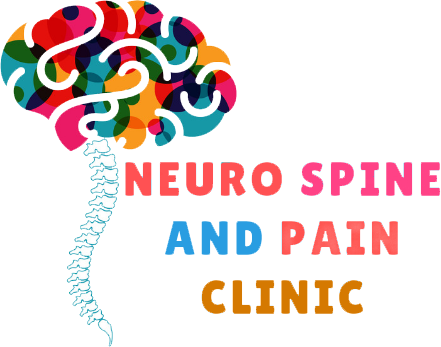
PHYSICAL MEDICINE AND REHABILITATION
PHYSICAL MEDICINE AND REHABILITATION
Physicians trained in Physical Medicine and Rehabilitation (also known as Physical Medicine or Physiatry) finish four years of medical school and continue training in a four to five year residency/fellowship program. Training focuses on the neurological system, brain, spine, bones, joints, muscles, and nerves. Physical Medicine and Rehabilitation focuses on restoring patients to their best functional level without surgery. Through methods such as physical therapy, SpineMED, spinal injections, electromyography (EMG), and pain management, your Physical Medicine physician will tailor a custom treatment plan to fit your needs and medical condition.
SPINEMED
SpineMED, a non-surgical disc decompression treatment, is an alternative to spine surgery for many suffering with neck and back pain. Reaching up to 86% in effectiveness, this treatment works for degenerative disc disease, spinal stenosis, disc hernation, facet syndrome, and failed back surgery syndrome. Spine MED is an FDA approved treatment that does not involve surgery, injections, or anything invasive. Treatments are painless, and patients often watch TV or fall asleep during treatments. This therapy reduces the pressure inside the discs and spine, allowing fluids and nutrients to enter to help heal the problem and restore function. For each treatment you lie on a state-of-the-art computer controlled table that does all the work for you. Click here to learn more.
PHYSICAL THERAPY
Your doctor may prescribe a cause of physical therapy as part of your treatment plan. This involves seeing a physical therapist at a physical therapy center. After a detailed initial evaluation, you will work with your physical therapist for multiple treatment sessions. A personalized hands-on approach is used to help reduce pain and restore function. Afterwards, a custom exercise program is developed for you to continue with exercises at home.
SPINAL INJECTIONS
Spinal injections are a much less invasive, conservative treatment option for patients struggling with spine pain. They are often considered before spine surgery is offered. Injections can be useful for relieving pain and often for determining the source of a patient’s pain. Because the medication is delivered right to the spine, they often can be much more successful than oral medications. Usually a steroid medication is used to provide strong anti-inflammatory properties to reduce swelling, promote healing, and reduce pain. Because an experienced doctor has many alternatives to choose from an office visit is suggested so a thorough history and physical exam can be conducted to determine the best course of treatment for you.
TRIGGER POINT INJECTIONS
The cause of your muscle pain or spasms may be one or more trigger points. Your doctor may decide to inject these spots to relax the muscle and help relieve your pain. Relaxing the muscle can also make movement easier.
ELECTROMYOGRAPHY / NERVE CONDUCTION STUDIES (EMG)
An EMG/Nerve Conduction Study (EMG) is a specialized test to determine if nerve or muscle damage is present. The physician will stimulate your nerves just as your brain stimulates them. To accomplish this, small electric shocks are delivered to the surface of the skin and electrodes (like stickers) are placed in specific positions to pick up your nerve response. The second part of the test requires the physician to insert a small acupuncture-like pin into a few selected muscles, one at a time. This is done so he can look and listen to your neuromuscular electrical activity.
Minimally Invasive Spine Surgery Traditional spinal surgeries usually require large incisions and stripping away the muscles of the spinal column just to get to a herniated disc. Now, new technology allows these complex procedures to be performed with the help of a microscope to magnify and illuminate the damaged area. Instead of stripping away the muscle, your surgeon can use a microscope to view the area through a much smaller incision and create a tunnel to the disc. This is done by splitting the muscle to pass the instrument through. Minimally invasive procedures result in less visible scars and shorter recovery times. A discectomy, or removal of the disc, can often be performed this way. However Not all patients are candidates for MIS. Whether the patient an undergo minimally invasive surgery or not is decided on the basis of clinical examination and MRI findings.
Selective nerve root block (SNRB) is an injection procedure used either to reduce or diagnose radicular or back pain. Therapeutic SNRB uses targeted injections of a numbing agent and a steroidal anti-inflammatory in an effort to cut off pain signals traveling from a particular nerve root to the brain. Diagnostic SNRB uses a numbing agent, usually lidocaine, to produce temporary pain relief – thereby confirming a particular nerve root is the source of pain or other symptoms, such as tingling, numbness or muscle weakness. Conditions treated or diagnosed by SNRB Sciatic or back pain can result from a number of spinal conditions that affect the cervical (neck), thoracic (middle and upper back) or lumbar (lower back) regions of the spine. The intervertebral discs, which are spongy cushions between bony vertebrae, are subject to gradual degeneration as people age. Other components of the spinal anatomy, including the facet joints, also are vulnerable to degenerative spine conditions. An injection procedure such as SNRB usually is attempted only after other conservative treatment methods, such as physical therapy and oral pain medication, have proven ineffective for conditions such as: Spinal stenosis – narrowing of the spinal canal Bone spurs – bony growths that are the body’s response to diminished skeletal stability Herniated disc – extrusion of nucleus material through a tear in the outer wall of an intervertebral disc Bulging disc – loss of structural integrity of a disc’s outer wall, forcing the wall out of its normal boundary Arthritis of the spine – degeneration of cartilage associated with spinal joints Spondylolisthesis – slippage of one vertebra over another. Sometimes a single selective nerve root block is not enough as the effects of a corticosteroid injection wear off over time. In such cases injections can be reptead. Many patients seek more effective and longer-lasting relief. They do better with surgery as blocks are not addressing the cause and are only temprory efforts which may not work in 30-40% of cases
Spinal fusion is a surgical procedure used to link together vertebrae, often because of a severely damaged disc. Discs can be damaged from rupturing, slipping, natural degeneration or injury. The damaged disc can cause severe leg and back pain and may require surgery if the pain is not relieved by conservative treatment. Pt with spondylolisthesis and spinal instability also require fusion During spinal fusion surgery, bone growth is stimulated and then used to link the vertebrae together to stop the painful movement in the area. Titanium metal screws or a titanium metal cage can be used to fuse the bone together.
Nerve Conduction Study (NCS) and Electromyography (EMG)
Nerve conduction studies (NCS) measure how well and how fast nerves can send electrical impulses. An electromyogram (EMG) measures the electrical activity of muscles both at rest and during contraction.
During an exam, a doctor may find a weakness in a specific muscle of the arm or leg. Back and neck NCS/EMG studies help to identify why this muscle may be weak and pinpoint where a nerve blockage may be occurring. Muscles cannot contract well if they do not have full nerve flow, and this may limit your ability to function normally. The test is based on placing needles into the arm or leg and measuring the length of time required for an electrical signal to pass down the nerve root.
Nerve conduction studies are most commonly performed for conditions that cause symptoms in the arms or legs. Some of the diagnoses include radicular symptoms, herniated disc, stenosis and nerve root compression. Testing can also evaluate for non-spinal causes of limb pain and weakness such as carpal tunnel syndrome and peripheral neuropathy.
Treatments
Injections
Surgical Treatments
Non-Surgical Treatments
Diagnostics
Before the Back or Neck NCS EMG
- Inform your doctor if you have a pacemaker or other implanted stimulator or in-dwelling catheter (these may not prevent the study, but certain precautions will be taken).
- Do not eat or drink anything that contains caffeine or smoke for three hours before the back or neck NCS/EMG.
- Wear loose clothing as testing will include the neck and arm or the leg and low back.
- Do not apply lotion to the extremities on the day of testing.
During the Back or Neck NCS EMG
- The procedure will usually be performed in an exam room.
- For the nerve conduction study (NCS):
- Your skin in the area to be tested may be cleaned if needed.
- Multiple electrodes will be attached to your skin.
- You will feel light electrical pulses over the muscles controlled by the nerves being tested.
- For the electromyography (EMG) test:
- Your skin in the area to be tested will be cleaned if needed.
- Micro-needles will be placed into the muscles to be tested.
- Readings will be made with the muscle at rest and again after you contract the muscle.
- The total test time is about one hour (the total time impulses are actually being sent along the nerves is only seconds).
After the Back or Neck NCS EMG
- You will be able to leave the clinic after the test is performed.
The information about the signals traveling along the nerves will be recorded and read by the physician performing the test. The results will be sent to your treating physician to discuss with you
